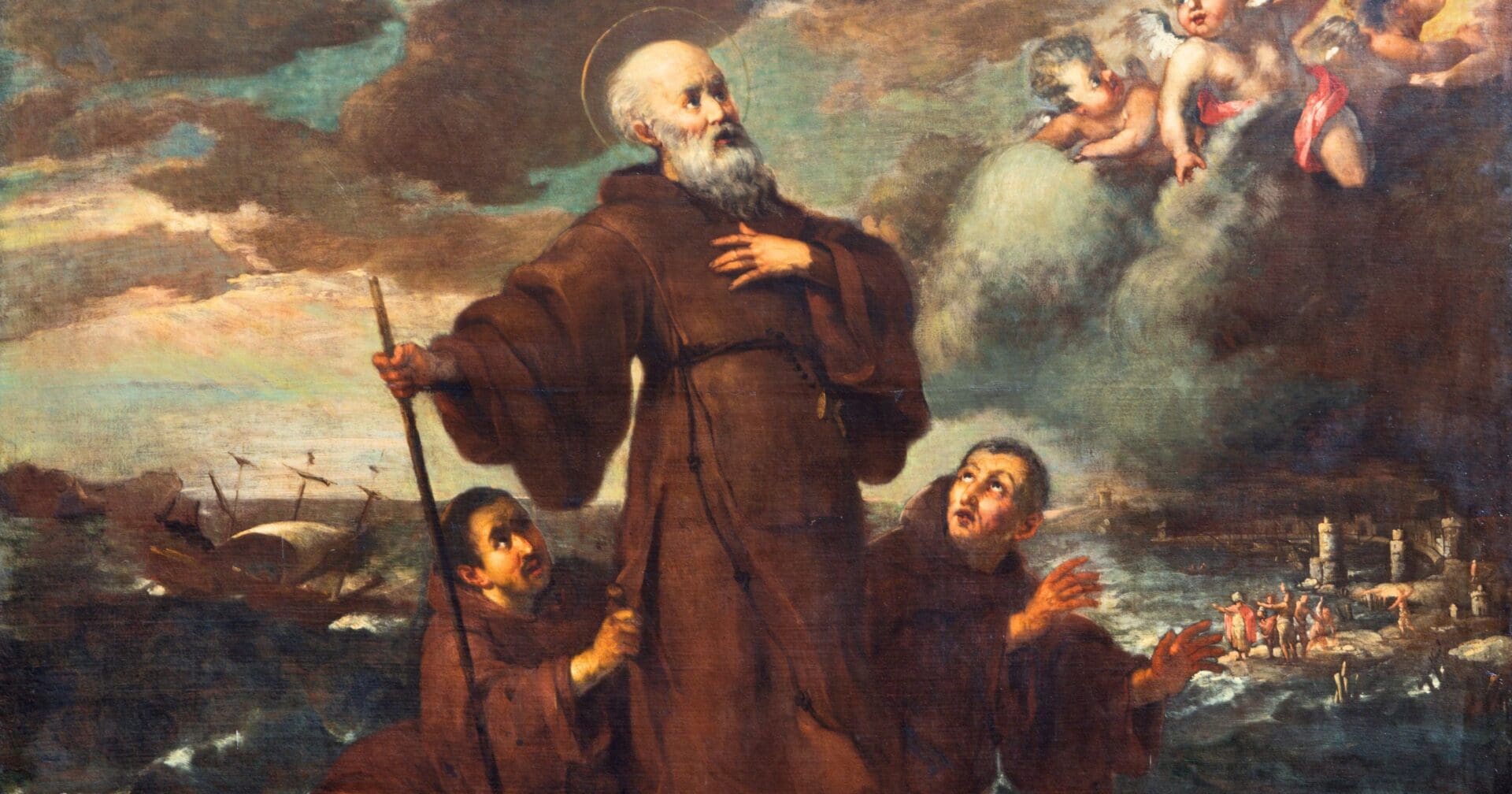Saint Francis of Paola, the progenitor of the Order of Minims, emerged into the world in 1416 at Paula, Calabria, Italy. Born to parents distinguished by their devoutness, Francis was their firstborn, arriving after years of their prayers for offspring, fervently invoking St. Francis of Assisi’s intercession. An affliction threatening his vision as a child was healed following his parents’ vow to St. Francis of Assisi, leading to a year spent in a Franciscan convent as per medieval custom, a decision marking the beginning of his path towards sanctity.
Early on, Francis exhibited profound spiritual depth. At thirteen, inspired by a vision of a Franciscan friar, he entered a convent, fulfilling his parents’ vow. His time there was marked by intense prayer, asceticism, humility, and obedience. Post this yearlong commitment, he undertook pilgrimages with his family to Assisi, Rome, among other sacred sites, before choosing a life of seclusion on his father’s land, eventually settling in a coastal cave for six years of solitary contemplation.
In 1435, his solitary practice ended as two individuals joined him, prompting the construction of a small monastic habitat. This modest beginning blossomed into a community under Francis’s guidance, leading to the founding of a sizable monastery around 1454 with Archbishop Pyrrhus of Cosenza’s blessing. The community’s growth mirrored the people’s growing devotion, fueled by Francis’s miracles and the monastery’s construction, a collective effort involving even the nobility.
The Minims’ lifestyle was defined by extreme austerity, perpetual fasting, and poverty, underscored by humility. Francis’s desire for his followers to remain humble and hidden was formalized when the order was named “Minims,” reflecting their ethos of being the least in the world.
Papal recognition came in 1474 from Sixtus IV, allowing Francis to establish a formal rule, later ratified by Alexander VI, who rebranded them as the Minims. The order’s expansion continued under Francis, with new monasteries in Calabria and Sicily and the creation of convents and a lay third order, drawing on St. Francis of Assisi’s example.
Francis spent his final months in solitude, focusing on death’s approach. He left his followers with messages of charity, rigor in their ascetic practices, and emphasized perpetual fasting. After imparting final instructions and appointing a successor, he died during a reading of St. John’s Passion on Good Friday, 1507. Canonized by Leo X in 1519, Francis’s remains faced desecration by the Huguenots in 1562, though some relics were salvaged by Catholics. While never widespread, the Minims had a presence across multiple countries, with their rules for both monks and nuns sanctioned by Julius II in 1506. St. Francis of Paola’s feast day is observed on April 2, commemorating the day of his passing.
















[…] uCatholic […]
a petition on behalf of those who lost loved ones in North Korea during the Forgotten war and are still missing–may they receive their remains back….
[…] ^ Saint Francis of Paola biography […]
[…] Source link […]
Saint Francis of Paola, pray for us!
St. Francis of Paola, pray for us.
[…] 1. https://ucatholic.com/saints/francis-of-paola/ […]
bless you saint Francis Paola.please pray for my family to be healthy n well. pray for us to follow gods will amen
St.Francis Paola,,,,,,,thank you for reminding us,,,,prayers do work!!!!!!!!
The swelling of his Eyes,,,,,cured,,,, a MIRACLE ,,,,,,and he knew to follow God’s will!!!!!!!!!
Because of his love for God,,,,,he was able to ,,,,,,create a place where other’s would FOLLOW God’s teachings!!!!!!
St.Francis , pray for all of those with EYE PROBLEMS!!!!!
Saint Francis of Paola, pray for all those in Covirus-19 victims.